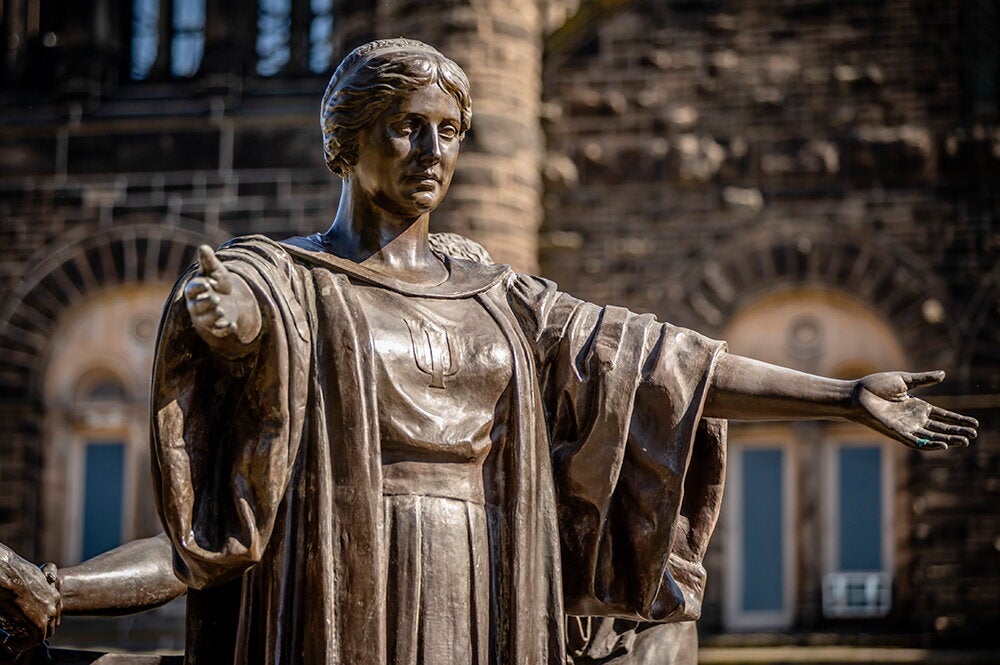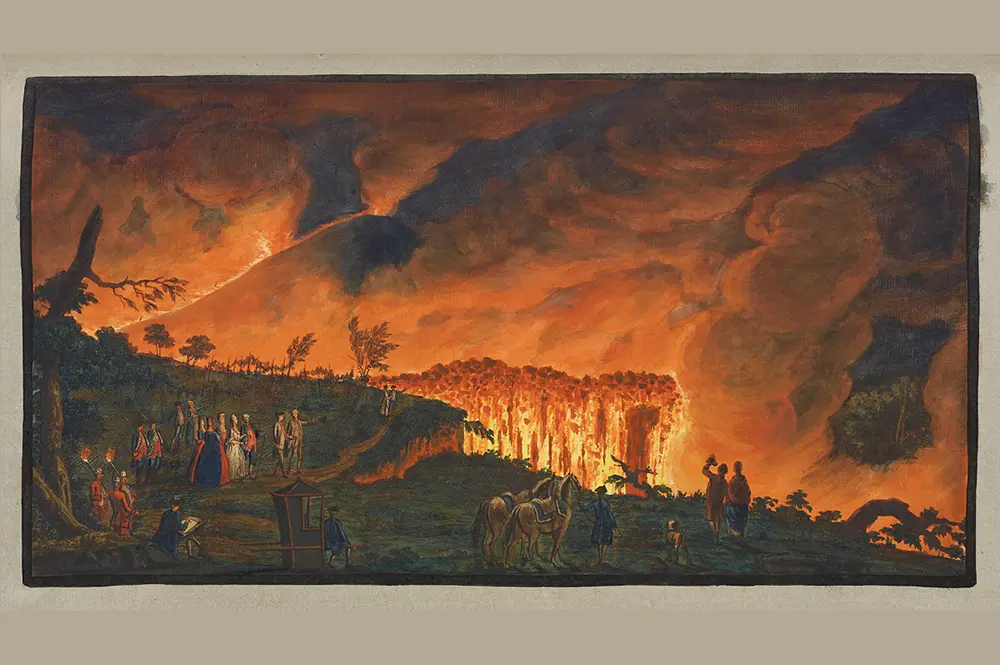
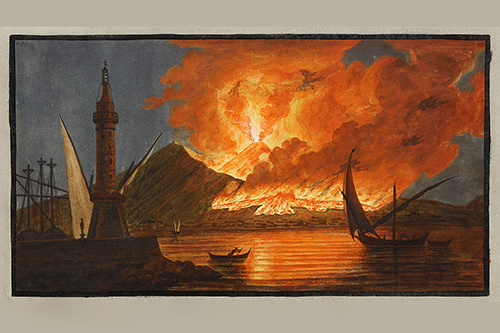
The eruptions of the Mount Vesuvius volcano in the 1760s and 1770s set off a public fascination with volcanoes. Sir William Hamilton, the British ambassador to Naples at the time, studied the volcano extensively and wrote one of the most celebrated and beautiful books on Mount Vesuvius.
The Rare Book and Manuscript Library at the University of Illinois has acquired an edition of Hamilton’s book, “Campi Phlegraei,” which is Latin for “fields of fire.”
The library purchased the book with gift money donated by Jim (BS, ’66, business; MS, ’67, management) and Lionelle Elsesser (BA, ’66, English; MS, ’67, library science) of St. Louis, who are supporters of the University Library. The Elsessers made a $500,000 donation to the Rare Book and Manuscript Library to be used for materials for special collections. The first purchase made with their donation was a manuscript written by Sir Isaac Newton on making the philosophers’ stone. “Campi Phlegraei” was purchased in fall 2018.
“We are thrilled to be able to add this milestone volume on the history of volcanology to the collection thanks to the generosity of Jim and Lionelle Elsesser,” said Lynne M. Thomas, the head of the Rare Book and Manuscript Library.
“It’s the most beautiful book ever published on the volcano, a gorgeous scientific treatise of the 18th century. It’s an absolute prize,” said Gillen D’Arcy Wood, a U of I English professor who specializes in late 18th- and early 19th-century literature and has written a book on the massive 1815 eruption of Mount Tambora in Indonesia. Wood spoke about Hamilton and his Mount Vesuvius book at an event celebrating the acquisition at the Rare Book and Manuscript Library.
Wood led a class on the history of geology in the fall 2018 semester and used books from the Rare Book and Manuscript Library’s extensive collection on the subject.
“We have a really great collection, but going through the literature, we realized we didn’t have this monumental work,” said Adam Doskey, a curator in the rare books library. “It was a milestone in the study of volcanoes. We have such a strong collection in geology and volcanoes in particular, and there was a gap.”
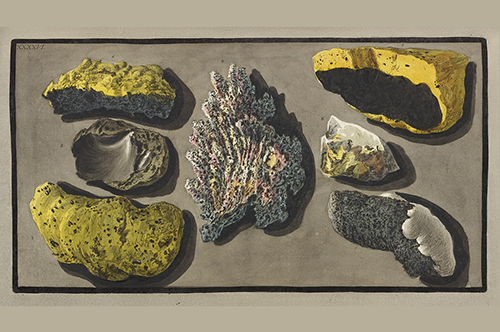
The library purchased its copy from a New York dealer. Doskey estimates fewer than 100 copies of the book exist today. He found 35 copies held by universities and public libraries, including Harvard and Yale universities; the Boston Public Library; the University of California, Berkeley; and Oxford and Cambridge universities. There are two other copies in Illinois, at the Newberry Library in Chicago and at the University of Chicago.
One of the things that makes the book so special is the richly colored, hand-painted illustrations.
“There are gorgeous hand-painted plates with scenes of Naples, Vesuvius, views of the crater, views of tourists and amateur scientists climbing the crater, and beautiful drawings of volcanic specimens,” Wood said.
One illustration of the Bay of Naples “became one of most famous postcard views in the world, the way we would think of the Statue of Liberty or the Golden Gate Bridge or Rio de Janeiro or Sydney Harbor,” Wood said. “It was an early version of the kind of visual culture that we inhabit. It was reproduced hundreds of times. It just became iconic.”
An Italian artist, Pietro Fabris, traveled with Hamilton on excursions to the volcano. Images from engravings based on his paintings were used in the book and hand-painted with gouache to produce intense colors.
Hamilton had an interest in art and was an amateur scientist. When Mount Vesuvius became active, “in the true tradition of an Enlightenment amateur man of science, he took it upon himself to give it close study,” Wood said.
He worked with a local resident who recorded the daily activity of Mount Vesuvius for decades. The book was not only beautiful, but it had scientific value in its close observations and detailed empirical data about the volcano’s activity, Wood said.
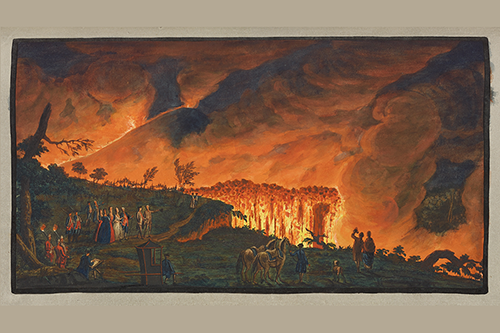
“It was the first serious systematic set of observations of Vesuvius and its behavior,” he said.
Hamilton’s book spurred the public fascination with volcanoes and made Mount Vesuvius a must-see stop on the European Grand Tour for upper-class Englishmen. The volcano was a cultural phenomenon as well as a geological one, Wood said.
A compulsive collector of antiquities, Hamilton studied the archaeology of Pompeii at the time excavations were underway there and at Herculaneum – both buried under ash during a massive eruption of Mount Vesuvius in 79 A.D.
“It was Hamilton and his 20 years in Naples that created this whole cultural phenomenon of Vesuvius and Pompeii. He did an enormous amount of work at both sites and did an incredible amount to publicize these sites,” Wood said. “It’s quite an achievement for one person who was, in effect, pursuing his hobbies.”
